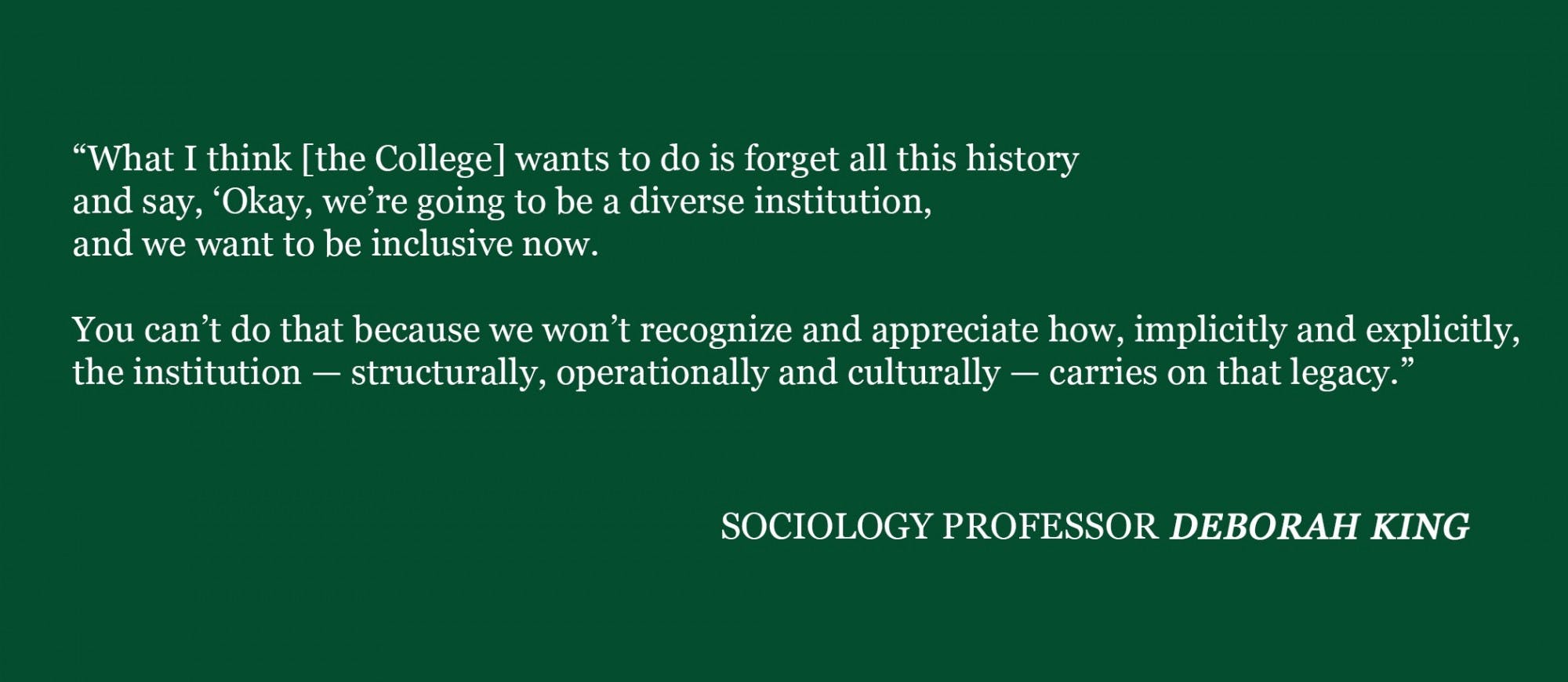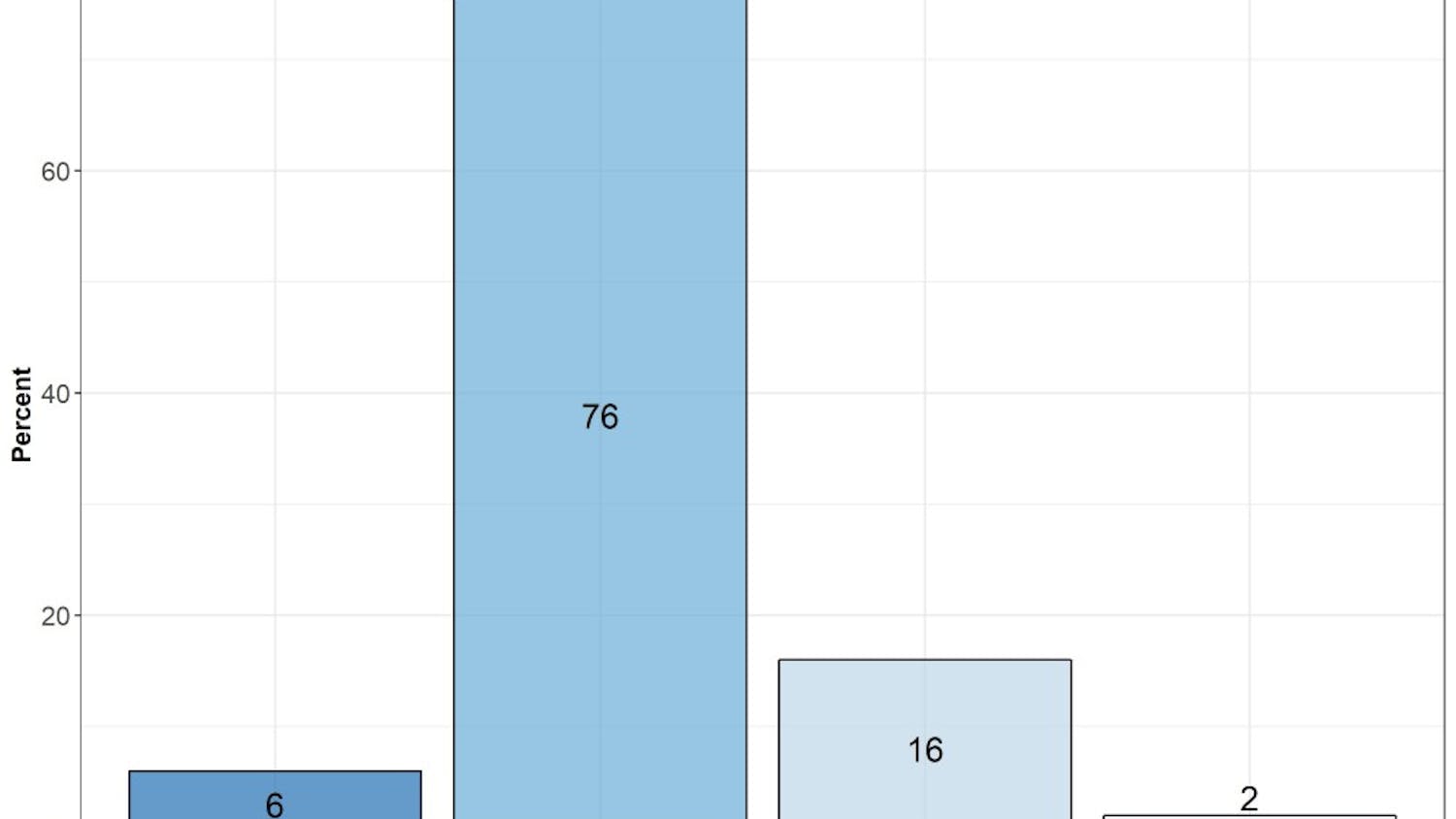Updated: February 19, 2020 at 4:48 p.m.
We only know some of their names: Achelous, Bill, Billy, Brister, Caesar, Cloe, Dinah, Elijah, Exeter, Fortune, Hagar, Hercules, Ishmaal, Peggy, Selinda and Sippy.
Those are the names of the enslaved people belonging to Dartmouth’s founder, Eleazar Wheelock, according to College archivist Peter Carini. At least two more slaves have been confirmed, an unnamed girl and an unnamed infant, and it’s probable that Wheelock owned even more. Elijah, one of his slaves, would be completely unknown if it weren’t for a single mention of his name in one of Wheelock’s account books; he and Fortune are listed as being rented out for half a day of pulling turnips, for a total price of 18 shillings.
“One of the things that is a consequence of enslavement is that people’s names are lost, their histories are erased, and again, we don’t have a great deal of information about who people are,” said African and African American studies professor Trica Keaton. “Every time we see documents like that ... we are seeing the evidence of life, the evidence of people unseen.”
Dartmouth’s history with slavery has recently been brought to new light through the current Rauner exhibit “The Ties that Bind: Slavery and Dartmouth” — the final product of sociology professor Deborah King’s course SOCY 79.08, “Lest We Forget: History, Collective Memory and Slavery at Dartmouth.” The 32 items within the collection are organized into three cases based on theme and time period, dating back from the time of Dartmouth’s founding all the way to the anti-slavery and pro-colonialization movements in the mid-1800s.
A sample of the exhibit’s contents includes a letter written by Wheelock in which he describes purchasing a slave alongside a wheel of cheese; the final wills of Eleazar Wheelock and his son John, detailing what to do with the slaves they possessed; an arrest warrant for one of Wheelock’s slaves, Caesar, accused of defaming a white woman; meeting minutes from the earliest iterations of fraternities at Dartmouth, including the Social Friends Literary Society of which the third black man to graduate from Dartmouth (Jonathan C. Gibbs, Class of 1852) was a member; excerpts of sermons written by Nathan Lord, originally an abolitionist before becoming a slavery apologist; and excerpts of a speech written by Daniel Webster, who was a founding member of the American Colonization Society.
This is not the first time that King has taught the course. In the past, iterations of the course have created the framework for a website about the history of slavery, as well as a walking tour of different sites on campus related to slavery. As for the decision of creating an exhibit this time around, King credited the team at Rauner for their support and said that it was a very “high-scale” way of integrating experiential learning into the classroom.
King emphasized that the final exhibit was the work of her students, and half of the class were freshmen — many of whom had never done archival research before. Julia Levine ’23, one of the students in the class, said she chose to take it because it sounded like a once-in-a-lifetime opportunity to study slavery during Dartmouth’s 250th anniversary.
Levine said she found the class fascinating and described her work as a type of “scavenger hunt” in Rauner, paging through various documents from the 1700s and 1800s to find information about slavery’s history on campus. As a result of her exposure to archival research during her first term on campus, she has since continued working for Rauner, transcribing documents related to Samson Occom, a Native American man from the Mohegan nation whom Wheelock befriended.
King said that through the exhibit, her students were able to understand and appreciate the many dimensions of figures like Webster, who played a large role in Dartmouth’s history.
“Daniel Webster is a very complicated figure when it comes to the issue of slavery,” King said. “Dartmouth may celebrate him for defending [the College] as a private institution, but this is also the Daniel Webster who is a founding member of the American Colonization Society, whose intent was to remove freed blacks from the United States.”
Carini, who helped guide the exhibit, emphasized that one of the main takeaways should be that Dartmouth does, in fact, have a relationship to slavery. He acknowledged that other institutions may have had different, “more egregious” ways of using enslaved people’s money and labor, but that shouldn’t diminish the impact of slaves’ contributions to the founding of the College.
“When we talk about Eleazar Wheelock coming up here, felling a lot of trees and building the campus, it sounds like he did it all with his own hands,” Carini said. “And the fact is, there were six to seven slaves who came with him, and … it’s important to recognize that legacy. They have a part in the setting-up of this institution that wasn’t their choosing.”
While the Rauner exhibit is a step in the right direction toward acknowledging the history of slavery on campus, many don’t consider it enough — and some would even call it long overdue.
Levine identified herself as both white and a “double legacy” student at Dartmouth, since her grandfather and both of her parents are alumni, and she expressed disappointment that more students from similarly privileged backgrounds aren’t interested in learning more about the College’s founding.
She said she was the only white person in the class, and that she felt embarrassed that there weren’t more white students, considering that Dartmouth is a predominantly white college. She said that she is glad to see some professors and students working on this topic, but that more students need to get involved in conducting research and educating themselves.
“It’s not hard to look around and see that most people are white, and most people are very privileged,” Levine said. “I am very privileged to be here, and I had a very privileged upbringing — I’m a legacy, too. But I still care about Dartmouth as an institution and our founding because it’s one of the most important things: why we’re here.”
Another reason why the Dartmouth community knows little about its history with slavery may be the College’s reluctance to publicize it. Dartmouth is not a member of Universities Studying Slavery, a collaboration among 62 other universities — including fellow Ivy League schools Brown University, Columbia University and Harvard University — working to address “historical and contemporary issues dealing with race and inequality in higher education” and “the complicated legacies of slavery in modern American society.”
King said that Dartmouth, like many other institutions, wants to create a narrative about itself which emphasizes the “good points” of its history, even if such narratives and mythologies aren’t always true. However, she also underscored the importance of recognizing an institution’s problematic past, instead of simply brushing it under the rug to focus on the future.
“What I think [the College] wants to do is forget all this history and say, ‘Okay, we’re going to be a diverse institution, and we want to be inclusive now,’” King said. “You can’t do that because we won’t recognize and appreciate how, implicitly and explicitly, the institution — structurally, operationally and culturally — carries on that legacy.”
Levine isn’t convinced that acknowledging slavery would result in bad publicity for the College. On the other hand, she said that she would personally find a public acknowledgement of slavery very attractive, since she wants to go to a school that’s aware of its founding. She pointed to other universities that have taken substantial steps toward recognizing their histories of slavery, like Georgetown University and other Universities Studying Slavery members, and expressed embarrassment that we’re not among those schools.
What should come next? King said she would like to see the College clearly and assertively call for a report detailing its relationship with enslaved people.
“I’m not saying that these aren’t difficult conversations,” King said. “I’m not saying that, particularly for an institution that’s in the midst of a capital campaign, there aren’t concerns about things that might come up. But as an institution of higher learning, as an institution that talks about preparing students to be leaders and address complex situations, it seems to me that we model that behavior in a variety of ways. We do it in the classroom, but we also do it when the institution tells the truth about its history.”
Carini expressed a similar sentiment, recognizing that it might take years for Dartmouth to investigate these histories and its relationships. He also added that it is important to view these historical figures in the context of their times. Wheelock, for example, was viewing his slaves like how he viewed Native Americans: in an 18th century religious way, quite literally thinking that he was saving them from damnation and saving their souls. Carini said that we should contextualize these figures historically while also acknowledging the consequences of their actions, both positive and negative.
Levine said she would love to see more students get involved with this topic by conducting research, educating themselves and voicing their opinions to College President Phil Hanlon and the administration. She also said that she’d be interested in an organized open discussion or panel about Dartmouth and slavery with other students and faculty.
Keaton acknowledges that we’re not even close to the finish line, though she is hopeful that an event she’s organizing to commemorate 400 years of history since 1619, the year that the first enslaved people arrived in Jamestown, will be another step in the right direction. The Office of the President will be supporting this event, according to Keaton. She also said that one way in which Dartmouth’s history with slavery could be incorporated in a more visible way would be in the recognition of the enslaved people’s names that we do know.
Keaton added that, even if it doesn’t resemble the kind of legacy we usually think about, Dartmouth students of African descent have their own distinct legacy on this campus, too — one that goes back all the way to the College’s beginnings.
“We, as people of color, are here, and we have a profound connection to places like this,” Keaton said. “Reparations, in its most fundamental sense, means to repair, and rendering visible invisible stories is a form of reparations, a form of repairing.”
The Office of the President declined to comment for this story.
Julia Levine is a member of The Dartmouth staff.



